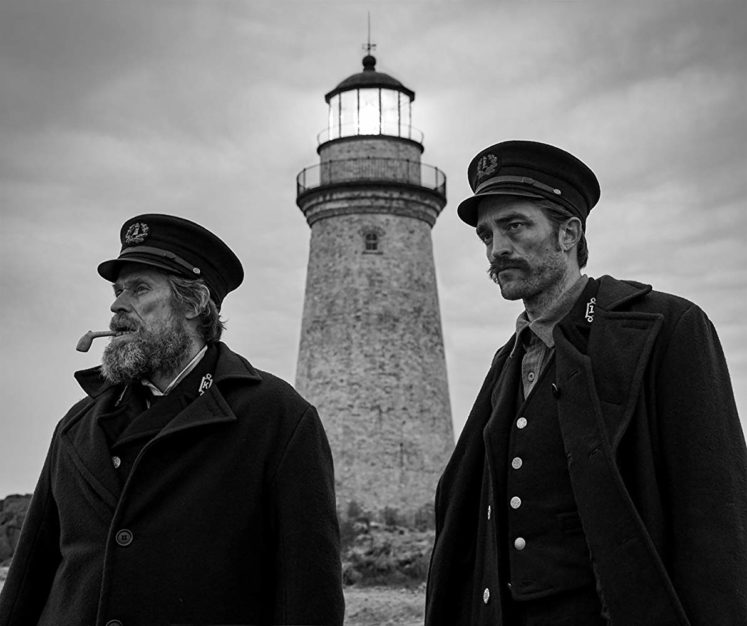Cape Forchu, on the southern tip of Nova Scotia, is consistently cold and rainy, foggy and blustery. For Robert Eggers, it was ideal.
The harsh Canadian climate gave the American filmmaker the desolate visual backdrop he needed for The Lighthouse, a story of two sentries stationed on a remote island, where the isolation drives them to the brink of insanity.
“It was merciless. The weather was dreadful, and it had great road access. So it was perfect,” Eggers said during Fantastic Fest in Austin. “We had as much control as we could, knowing the weather was going to brutalize us. In general, the most brutal weather you see is real.”
The slow-burning psychological thriller is set in the late 19th century at an outpost in Maine, where Thomas (Willem Dafoe) is the longtime lightkeeper who masks his physical and emotional scars with alcohol and erratic behavior. His new assistant is Ephraim (Robert Pattinson), who initially keeps his distance but eventually finds himself drawn into Thomas’ territory atop the tower, which spawns a battle for supremacy accompanied by sexually-charged hallucinations.
The screenplay by Eggers (The Witch) and his brother, Max, is loosely inspired by a true-life tale of two lighthouse keepers in Wales during the early 19th century.
“They were both named Thomas. One was old and one was younger. A storm comes and they can’t leave, and madness ensues,” Eggers said. “This story is not that story, but I thought it could be a two-hander about identity that devolves into something obscure and weird. And if it is a two-hander, it’s going to be a power struggle. Nothing good happens when two men are left alone in a giant phallus.”
Eggers, 36, chose black-and-white film to capture an atmosphere filled with pipe smoke, rusted-out fixtures, and cable-knit sweaters. Specifically, he wanted to replicate the look of orthochromatic film from the early 20th century, with a custom cyan filter and vintage lenses to add texture.
“There was no way to capture this bleak world without black-and-white negative. It communicates something, even if we don’t know it. You can’t quite replicate it digitally,” Eggers said. “We wanted it to feel like an old movie.”
In addition, he said the film’s condensed aspect ratio (a boxy throwback of 1.19:1, compared to the 2.35:1 ratio most common in Hollywood productions) was a better fit for the claustrophobic setting. That’s especially true given the vertical nature of the lighthouse itself, which Eggers and his crew designed and built from scratch.
Aside from the two human characters, The Lighthouse is populated by seagulls, most of which were native to the setting. However, three of them were brought in from England — the last “cinematic gulls” in existence, according to Eggers — for close-ups and specific movements.
“They were very well-trained. It was incredibly impressive,” he said. “I was very honored to work in the presence of these three masters.”





